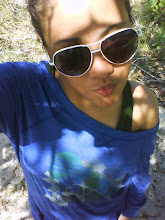Nervous system is divided into two: central nervous system which is responsible for the brain and spinal cord and Peripheral nervous system which is responsible for the nerve outside the brain and spinal cord. Peripheral nervous system has somatic (skeletal muscles) and autonomic (smooth and cardiac muscle and gland). Autonomic can be parasympathetic (homeostasis) and sympathetic (alert system).
We also talked about nervous tissues. Neuroglia or glia cells are specialized cell that allows nervous system to perform its functions. In CNS there are 4 tissues: Astrocytes which are metabolic and structural support cells, Microglia which removes the debris, Ependymal cells which covers the lining cavities and the Oligodendrocytes which makes the myelin. While in PNS there are 2 tissues: Schwann cells which makes the myelin and Satellite cells which are the support cells.

I have learned that Neurons are the control function of nervous system and there are the ones responsible for measuring environment and making decisions. Dendrites are a part of neuron that receives the information from other cells. Axon is also a part of neuron that generates and sends signals to other cells. Axon terminal is the connection to a receiving cell. The combination of axon terminal and receiving cell is what we call synapse. Neurons can be classified by its structure and function. By its structure, bipolar, multipolar and unipolar while by function, sensory neurons, motor neurons, and interneurons. Excitable cells are also neurons; it carries a small electric charge when stimulated. It is the reason why electrocution can cause nervous system damage. It shorts out the electrical pathways in the neurons.
The reporter also discussed about action potentials. Action potentials are the whole series of permeability changes within the cell and the resultant changes of in the internal and external changes to carry the impulse down the axon. If the cell is not stimulated it is polarize. If the cell is more positive than resting it is depolarize. Hyperpolarized is the cell that overshoots and becomes more negative when at rest. The period during which action potentials cannot accept another stimulus is what we call refractory period.
The size of the stimulus determines the excitement of the cell. A big stimulus causes a bigger depolarization than a small stimulus.
Impulse conduction happens once an action potential is formed; it travels down the axon from the cell body to the terminal. It has two characteristics: presence of myelin and diameter of axon. Myelin is lipid insulation or a sheath. When an axon is wrapped with myelin it is called myelinated which look white while unmyelinated looks gray. The diameter of axon affects the speed of action potential flow.
Spinal cord is located in a hallow tube running inside the vertebral column from the foramen magnum to the second lumbar. Meninges are series of protective membranes surrounding the brain; it covers the delicate structure of the brain and spinal cord, and helps to set up a layer that acts as a cushioning and shock absorbers. It has 3 layers: dura mater, arachnoid mater, and pia mater. It also has spaces: epidural space which is the space between dura and vertebral column, subdural space the space between dura mater and arachnoid mater, and subarachnoid space the soace between arachnoid and pia mater.

Spinal cord contains fissure and sulcus. Sulcus is a shallow groove in the CNS surface while fissure is a deep grove on the CNS also. Sulcus has different sections horns where neurons have their cell bodies and columns which act as nerve tract, pathway, or axon running up and down the spinal cord to and from the brain.
Nerves are the connection between the CNS and the world outside the CNS. Spinal nerves are nerves that are connected to the spinal cord. Mixed nerve is a nerve that carries both type of information. The complex branching patterns of nerves are plexuses.
Reflexes are the simplest form of motor output. Its response is proportionate to the stimulus. There are 3 types of reflexes: withdrawal reflexes which are an activated, vestibular reflex which keeps you vertical, and startle reflexes which cause you to jump at loud sounds.
This was a long chapter. It takes days for me to fully understand the lesson. The reporter did put effort on the visual aids but she wasn’t able to discuss it properly. She simply doesn’t know some of her report that’s why we didn’t understand it well.





